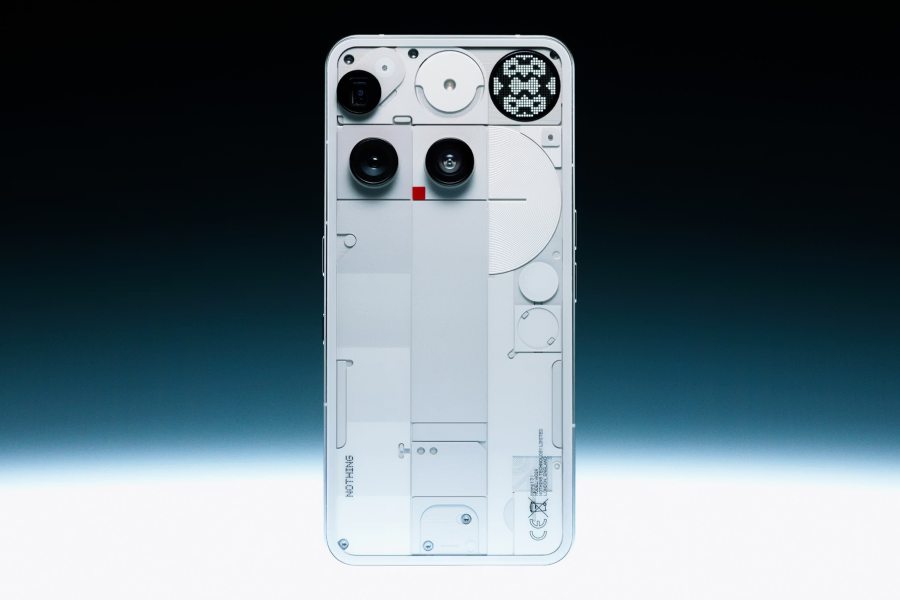What’s the best way for a smartphone company to show it’s made it? Undoubtedly, by launching a flagship. For most brands, that’s the big milestone, a premium device that says, “We belong.”
Nothing is doing just that with the new Phone (3). At $799 / €799 / £799, this is the company’s first attempt in years at making a high-end Android phone. And with this, it wants to attract the same crowd who might otherwise buy a Pixel 9, a Galaxy S25, or even the baseline iPhone 16.

But despite its more premium pricing and upgraded specs, the Phone (3) is still very much a Nothing device, which is to say, different for the sake of being different. So, who exactly is it for?
Let’s start with what it offers.
1. The specs look flagship enough
The Phone (3) doesn’t lack on paper. You get a 6.67-inch OLED display with 120Hz refresh rate, 1B colors, HDR10+ support, and up to 4,500 nits of peak brightness.
Powering the phone is Qualcomm’s Snapdragon 8s Gen 4, which sits slightly below the top-tier Snapdragon 8 Gen 4 Elite. This is a 4nm chip, paired with either 12GB or 16GB of LPDDR5 RAM and UFS 4.0 storage (256GB or 512GB). Unsurprisingly, the Phone (3) delivers smooth performance, with Nothing OS 3.5 (based on Android 15) taking care of software optimization.
The Phone (3)’s 5,150mAh battery easily gets you through a full day with moderate use. For charging, it supports 65W wired, 15W wireless, and Power Delivery 3.0. However, you’ll need to bring your own charger as it’s not included in the box.
The phone is also IP68 rated, made of Gorilla Glass and an aluminum frame, and supports two physical SIMs plus eSIM. And no, there’s no headphone jack.
2. Cameras are a mixed bag
There are three 50-megapixel sensors on the back: a wide, a 3x periscope telephoto, and an ultrawide. The main sensor does most of the heavy lifting and delivers good results with detail and color.
The telephoto lens retains sharp detail at 3x zoom and performs reasonably well up to 6x, with a noticeable drop-off beyond that. The 50MP ultrawide sensor offers a 114-degree field of view, producing decent wide-angle shots.
Up front, a 50MP selfie camera handles self-portraits and supports 4K video recording at 60fps.
3. The Glyph is no longer a gimmick, or is it?
Nothing is probably the only brand in the smartphone space that consistently tries to do something different, and the original Glyph interface was a result of that mindset. It’s a fun feature to show off to friends, though the LED lights on the back have limited practical use.
As a result, the Phone (3) introduces a dot-matrix-style mini-display made up of 489 LEDs in the corner of the rear panel. This “Monochrome LED Display,” as the company calls it, can now show simple graphics and app icons.
It’s still a bit gimmicky in some ways, though. For instance, features like the Magic 8-Ball or spin-the-bottle probably won’t get much use, but other functions are more practical. You can view the time, charging status, or volume level without flipping the phone over. The back is also touch-sensitive, allowing interaction with certain widgets directly from the Glyph interface.
Overall, it’s a meaningful upgrade over the original Glyph lights. But the real question is whether this second screen will gain broader utility or remain a niche feature.
4. Clean, uncluttered software
Nothing OS 3.5, based on Android 15, leans hard into the retro-dot-matrix look, but under the hood, it’s clean, smooth, and remarkably lightweight. It’s one of the more streamlined Android experiences out there, closer to what you’d find on a Pixel than on a Galaxy.
There are also a few thoughtful extras. Essential Space, introduced earlier with the Phone (3a) Pro, is back; it lets you record voice memos while the phone is facedown, with visual feedback displayed on the Glyph screen. Essential Search is another AI-powered feature that scans your phone’s contents to answer simple queries quickly.
The company promises five years of Android version updates and seven years of security patches.
5. So, who’s this for?
The Phone (3) isn’t the best phone at $799. You can get better cameras on the Pixel 9 Pro, better performance on a Galaxy S25+, and more consistent software updates from both. But if you’re bored with the usual players and want something that looks and sometimes feels a bit different, this might be for you.
It’s for people who care about design but don’t mind asymmetry. People who like the idea of a notification light that doubles as a visual status monitor. People who like Android but find most Android phones too cluttered.
It’s not for gamers who want top thermal performance. It’s probably also not for photographers who demand perfect color accuracy from every lens.
The Phone (3) makes more sense if you’re already in the Nothing ecosystem. If you own Nothing Ear earbuds or the company’s older phones, the continuity is appealing. But for someone switching from Apple or Samsung, it’s more of a leap.
Please Note: When you buy something using the links in our articles, we may earn a small commission at no cost to you.
For more daily updates, please visit our News Section.
Stay ahead in tech! Join our Telegram community and sign up for our daily newsletter of top stories.







